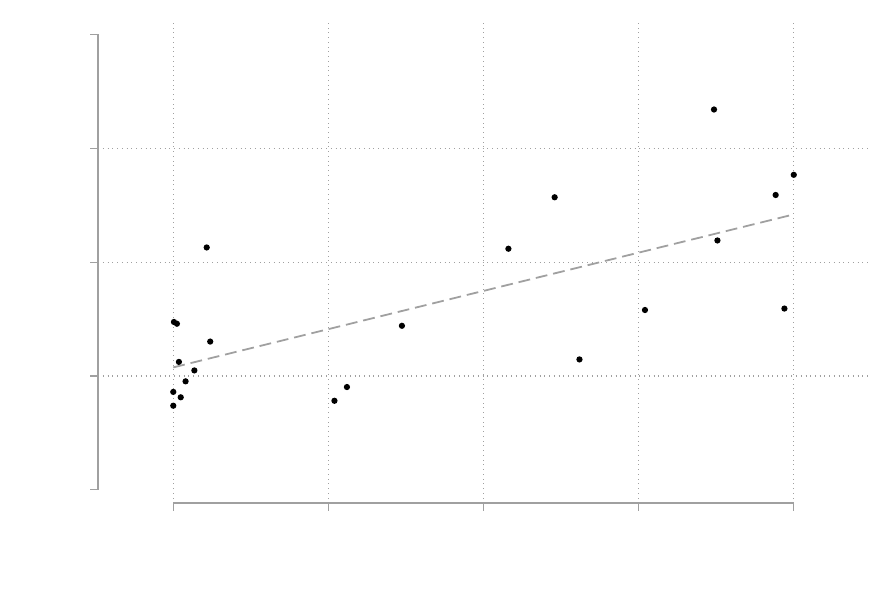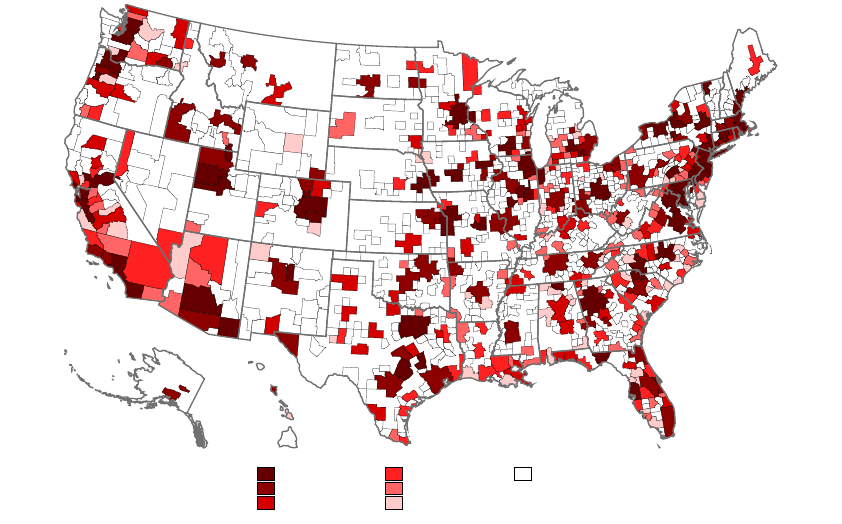
5757 S. University Ave.
Chicago, IL 60637
Main: 773.702.5599
bfi.uchicago.edu
WHITE PAPE
R
How Many Jobs Can be Done at Home?
Jonathan I. Dingel and Brent Neiman
JUNE 2020

How Many Jobs Can be Done at Home?
∗
Jonathan I. Dingel Brent Neiman
University of Chicago, Booth School of Business, NBER, and CEPR
June 19, 2020
Abstract
Evaluating the economic impact of “social distancing” measures taken to arrest
the spread of COVID-19 raises a fundamental question about the modern economy:
how many jobs can be performed at home? We classify the feasibility of working at
home for all occupations and merge this classification with occupational employment
counts. We find that 37 percent of jobs in the United States can be performed entirely
at home, with significant variation across cities and industries. These jobs typically
pay more than jobs that cannot be done at home and account for 46 percent of all
US wages. Applying our occupational classification to 85 other countries reveals that
lower-income economies have a lower share of jobs that can be done at home.
∗
We thank Menglu Xu and Mingjie Zhu for research assistance. A preliminary version of this research
reporting results only for the United States appeared in the first issue of CEPR’s Covid Economics: Vetted
and Real-Time Papers. We are grateful to Megan Fasules for invaluable feedback on that version. In
a subsequent version, we added results for 85 other countries and discussed related subsequent research.
We thank the editor and three anonymous referees for suggestions that improved our presentation of our
classification procedure and resulting geographic variation across US cities. Dingel thanks the James S.
Kemper Foundation Faculty Research Fund at the University of Chicago Booth School of Business. Neiman
thanks the William Ladany Faculty Foundation at the University of Chicago Booth School of Business and
the Becker Friedman Institute at the University of Chicago for financial support. jdingel@chicagobooth.edu
and brent.neiman@chicagobooth.edu.

1 Introduction
Evaluating the economic impact of “social distancing” measures taken to arrest the spread
of COVID-19 raises a number of fundamental questions about the modern economy: How
many jobs can be performed at home? What share of total wages are paid to such jobs?
How does the scope for working from home vary across occupations, cities, industries, and
countries?
We use surveys describing the typical experience of US workers in nearly 1,000 occu-
pations to classify each occupation as able or unable to be done entirely from home. We
find that 37 percent of jobs in the United States can be performed entirely at home, with
significant variation across cities and industries. These jobs typically pay more than jobs
that cannot be done at home and account for 46 percent of all US wages.
Applying our occupational classification to 85 other countries reveals that lower-income
economies have a lower share of jobs that can be done at home. Developing and emerging
market countries with per capita GDP levels below one-third of US levels may only have
half as many jobs that can be done from home.
Our measure, which was constructed using pre-pandemic data, correlates well with early
estimates of the share of workers who have in fact worked from home during the crisis. Our
online replication package reproduces and details all results summarized in the paper.
1
We
hope our work proves useful in identifying sectors that can safely operate without spreading
the virus, in characterizing which workers face greater economic and health risks, and in
pondering the likelihood of a future, after the public health crisis abates, in which remote
working is far more common.
We start in Section 2 describing how we construct our work-from-home measure using
surveys from the Occupational Information Network (O*NET). Section 3 reports the results
of merging this occupation-level measure with information from the US Bureau of Labor
Statistics (BLS) on the prevalence of each occupation in the aggregate US economy as well
as in particular metropolitan areas and industries. In Section 4, we merge our classification
with occupational employment data for many countries provided by the International Labour
Organization (ILO) to reveal a positive relationship between the share of jobs that can be
done at home and a country’s level of economic development. Section 5 reviews the related
literature, including recent efforts to measure work-from-home behavior during the initial
months of the crisis. Section 6 concludes.
2 Classification of occupations
We classify the feasibility of working at home for all occupations using the responses to two
surveys included in release 24.2 of the database administered by O*NET, a program spon-
sored by the US Department of Labor to improve our understanding of the nature of work
and the workforce. The O*NET database contains hundreds of standardized and occupation-
specific descriptors on almost 1,000 occupations. The first survey is called the Work Context
1
All code and data are available at https://github.com/jdingel/DingelNeiman-workathome. Our
code makes it easy for users to explore alternative assumptions about whether any given occupation can be
done from home.
2
Questionnaire and includes questions aiming to capture the “physical and social factors that
influence the nature of work” such as interpersonal relationships, physical work conditions,
and structural job characteristics. The second survey is called the Generalized Work Ac-
tivities Questionnaire and includes questions aiming to capture the “general types of job
behaviors occurring on multiple jobs” such as the input of information, interaction with oth-
ers, mental processes, and work output. The median occupation had 26 respondents for each
Work Context question and 25 respondents for each Generalized Work Activities question.
If any of the following conditions in the Work Context survey responses are true for an
occupation, we code that occupation as one that cannot be performed at home:
• Average respondent says they use email less than once per month (Q4)
• Average respondent says they deal with violent people at least once a week (Q14)
• Majority of respondents say they work outdoors every day (Q17 & Q18)
• Average respondent says they are exposed to diseases or infection at least once a week
(Q29)
• Average respondent says they are exposed to minor burns, cuts, bites, or stings at least
once a week (Q33)
• Average respondent says they spent majority of time walking or running (Q37)
• Average respondent says they spent majority of time wearing common or specialized
protective or safety equipment (Q43 & Q44)
If any of the following conditions in the Generalized Work Activities survey responses are
true, we code the occupation as one that cannot be performed at home:
• Performing General Physical Activities is very important (Q16A)
• Handling and Moving Objects is very important (Q17A)
• Controlling Machines and Processes [not computers nor vehicles] is very important
(Q18A)
• Operating Vehicles, Mechanized Devices, or Equipment is very important (Q20A)
• Performing for or Working Directly with the Public is very important (Q32A)
• Repairing and Maintaining Mechanical Equipment is very important (Q22A)
• Repairing and Maintaining Electronic Equipment is very important (Q23A)
• Inspecting Equipment, Structures, or Materials is very important (Q4A)
We then merge this information with BLS data on the number and wages of workers in
each standard occupational classification (SOC) code in the country as a whole as well as in
metropolitan areas and industries.
Table A.1 in the Appendix summarizes the contribution of each O*NET survey question
to our classification of which occupations can be done from home in two ways. First, the
columns labeled “Cannot do at home” report the shares of jobs (unweighted and weighted
by their wages) that satisfy each condition causing us to classify an occupation as unable
to be performed entirely at home. “Majority of time walking or running” and “majority of
3

time wearing protective or safety equipment” are the two conditions that are satisfied most
frequently. Multiple conditions can hold for any single occupation, so the sum of these shares
far exceeds the share of jobs that we infer cannot be performed entirely at home. Second, the
columns labeled “Sole condition” consider the 14 percent of employment held by occupations
where a single condition alone renders the occupation unable to be done from home. Among
those cases, “performing or working directly with the public” is the condition that mostly
commonly causes this classification.
To check the sensibility of our algorithm, we each manually assigned values of 0, 0.5,
or 1 to each 5-digit SOC code based on introspection and then averaged our judgments.
Our two assessments about whether an occupation could be done at home or not agreed in
about 85 percent of the cases, and our disagreements were only rarely greater than 0.5. The
scores generated by this manual assignment are highly correlated with our O*NET-derived
classification, though we manually assigned slightly fewer occupations as able to work from
home. Appendix Table A.2 reports the 5-digit occupation codes for which the two measures
differ by 0.8 or more.
3 Results for the United States
Our classification implies that 37 percent of US jobs can plausibly be performed at home.
Our classification uses job characteristics that clearly rule out the possibility of working
entirely from home and neglects many characteristics that would merely make working from
home difficult.
2
It is, therefore, an upper bound on what might be feasible and greatly
exceeds the share of jobs that in fact have been performed entirely at home in recent years.
According to the 2018 American Time Use Survey, less than a quarter of all full-time workers
work at all from home on an average day, and even those workers typically spend well less
than half of their working hours at home.
Table 1 reports the share of jobs that can be performed at home when we aggregate our
occupational classification to the major group (2-digit) level. There is significant variation
across occupations. Managers, educators, and those working in computers, finance, and law
are largely able to work from home. Farm, construction, and production workers cannot.
Workers in occupations that can be performed at home typically earn more. If we assume
all occupations involve the same number of hours of work, the 37 percent of US jobs that can
plausibly be performed at home account for 46 percent of all wages. Figure 1 plots the share
of jobs that can be done at home in each major occupation group against its median hourly
wage.
3
There is a clear positive relationship between our work-from-home measure and the
typical hourly earnings at the occupation level. Mongey, Pilossoph and Weinberg (2020) use
a variant of our occupational classification to study the characteristics of individuals who
cannot work at home. They find that these individuals are more likely to be lower-income,
2
For example, our classification codes 98 percent of the 8.8 million teachers in the United States as able
to work from home, which seems sensible given the large number of schools currently employing remote
learning. Re-coding these teaching jobs as unable to be performed from home would, in the aggregate,
reduce our estimate of the share of jobs that can be done at home by about six percentage points.
3
In an earlier blogpost, Avdiu and Nayyar (2020) plotted an equivalent relationship between our measure
of the share of jobs that can be done at home and the occupation’s income decile. Dias et al. (2020) provide
related evidence for the United Kingdom.
4

Table 1: Share of jobs that can be done at home, by occupation’s major group
O*NET-derived Manual
Occupation baseline assignment
15 Computer and Mathematical Occupations 1.00 1.00
25 Education, Training, and Library Occupations 0.98 0.85
23 Legal Occupations 0.97 0.84
13 Business and Financial Operations Occupations 0.88 0.92
11 Management Occupations 0.87 0.84
27 Arts, Design, Entertainment, Sports, and Media Occupations 0.76 0.57
43 Office and Administrative Support Occupations 0.65 0.51
17 Architecture and Engineering Occupations 0.61 0.88
19 Life, Physical, and Social Science Occupations 0.54 0.36
21 Community and Social Service Occupations 0.37 0.50
41 Sales and Related Occupations 0.28 0.21
39 Personal Care and Service Occupations 0.26 0.00
33 Protective Service Occupations 0.06 0.00
29 Healthcare Practitioners and Technical Occupations 0.05 0.06
53 Transportation and Material Moving Occupations 0.03 0.00
31 Healthcare Support Occupations 0.02 0.00
45 Farming, Fishing, and Forestry Occupations 0.01 0.00
51 Production Occupations 0.01 0.00
49 Installation, Maintenance, and Repair Occupations 0.01 0.00
47 Construction and Extraction Occupations 0.00 0.00
35 Food Preparation and Serving Related Occupations 0.00 0.00
37 Building and Grounds Cleaning and Maintenance Occupations 0.00 0.00
Notes: This table reports the share of jobs that can be done at home for each 2-digit SOC major group.
We aggregate our 6-digit SOC classification using the employment counts in the BLS’s 2018 Occupational
Employment Statistics. The O*NET-derived classification in the first column is the basis for all subsequent
results reported in this paper. The results using the manual assignment, reported in the second column,
are available in our replication package.
lack a college degree, rent their dwellings, be non-white, and lack employer-provided health
insurance.
There is significant variation in the share of jobs that can be done at home across US
cities. The first two columns in Table 2 report the top ten and bottom ten metropolitan
statistical areas (from among the 100 largest, by employment) in terms of the share of jobs
(unweighted and weighted by wage) that could be done at home. More than 45 percent of
jobs in San Francisco, San Jose, and Washington, DC could be performed at home, whereas
this is the case for 30 percent or less of the jobs in Fort Myers, Grand Rapids, and Las Vegas.
Figure A.1 in the Appendix depicts the geographic distribution of our unweighted measure
of the share of jobs that can be done at home across metropolitan areas.
The last four columns of Table 2 list for each city the characteristics analyzed by Mongey,
Pilossoph and Weinberg (2020). Across all metropolitan areas, the share of jobs that can
be performed at home is strongly positively correlated with median household income (0.53)
and its share of residents who attained a college degree (0.71) and negatively correlated
with its home ownership rate (-0.31) and its share of residents who are white (-0.12). The
5

Management (11)
Business/Finance (13)
Computing/Mathematical (15)
Architecture/Engineering (17)
Physical/Social Scientists (19)
Social Services (21)
Legal (23)
Education (25)
Entertainment/Media (27)
Healthcare Practitioners (29)
Healthcare Support (31)
Protective Service (33)
Food Preparation (35)
Building Cleaning (37)
Personal Care (39)
Sales (41)
Office/Administrative (43)
Farming (45)
Construction (47)
Maintenance (49)
Production (51)
Transportation/Moving (53)
0
15
30
45
60
Median hourly wage (USD)
0 .25 .5 .75 1
Share of jobs that can be done at home
Figure 1: Jobs that can be done at home typically earn higher wages
Notes: This graph depicts the median hourly wage and share of jobs that can be done at home
for each 2-digit SOC major group. We compute these shares using our O*NET-derived classification
of occupations that can be done at home and employment counts in the BLS’s 2018 Occupational
Employment Statistics. The latter is the source of median hourly wages.
fact that the latter two cross-city correlations have the opposite sign of the corresponding
cross-individual correlations reported by Mongey, Pilossoph and Weinberg (2020) underlines
the importance of distinguishing between people and places when describing variation in
economic conditions.
Table 3 aggregates our classification to the 2-digit industry level. Whereas most jobs in
finance, corporate management, and professional and scientific services could plausibly be
performed at home, very few jobs in agriculture, hotels and restaurants, or retail could be.
6

Table 2: Share of jobs that can be done at home, by metropolitan area
Share of jobs Metropolitan characteristics
Weighted BA Median White Owner
Unweighted by wage share income share share
Top ten
San Jose-Sunnyvale-Santa Clara, CA 0.51 0.66 0.50 115 0.46 0.57
Washington-Arlington-Alexandria, DC-VA-MD-WV 0.50 0.64 0.51 101 0.54 0.63
Durham-Chapel Hill, NC 0.46 0.57 0.47 60 0.62 0.60
Austin-Round Rock, TX 0.46 0.58 0.44 73 0.77 0.58
San Francisco-Oakland-Hayward, CA 0.45 0.58 0.49 100 0.50 0.54
Boston-Cambridge-Nashua, MA-NH 0.44 0.55 0.47 86 0.76 0.62
Bridgeport-Stamford-Norwalk, CT 0.44 0.58 0.47 93 0.73 0.67
Hartford-West Hartford-East Hartford, CT 0.44 0.53 0.39 76 0.76 0.67
Salt Lake City, UT 0.43 0.53 0.34 71 0.80 0.67
Des Moines-West Des Moines, IA 0.43 0.53 0.37 69 0.87 0.69
Bottom ten
Baton Rouge, LA 0.30 0.36 0.28 57 0.59 0.68
Las Vegas-Henderson-Paradise, NV 0.30 0.37 0.24 57 0.61 0.53
Riverside-San Bernardino-Ontario, CA 0.30 0.35 0.21 62 0.61 0.63
Scranton–Wilkes-Barre–Hazleton, PA 0.30 0.36 0.25 52 0.90 0.68
McAllen-Edinburg-Mission, TX 0.30 0.31 0.18 38 0.88 0.68
Grand Rapids-Wyoming, MI 0.29 0.37 0.32 61 0.84 0.73
Lancaster, PA 0.29 0.36 0.27 64 0.89 0.68
Bakersfield, CA 0.29 0.36 0.16 52 0.75 0.58
Stockton-Lodi, CA 0.29 0.33 0.18 61 0.56 0.56
Cape Coral-Fort Myers, FL 0.28 0.34 0.28 55 0.85 0.71
Notes: This table reports the metropolitan areas with the largest and smallest shares of jobs that can
be done at home among the 100 largest metropolitan areas (as ranked by total employment). The first
two columns report these shares unweighted and weighted by average wages. The remaining four columns
report the metropolitan areas’ fraction of population 25 years or older whose educational attainment is
bachelor’s degree or higher (series B15003), median household income in thousands of (2018) US dollars
(B19013), fraction of residents whose race is “white alone” (B02001), and fraction of housing units that are
owner-occupied (B25003), as reported in the American Community Survey 2014–2018 5-Year Estimates for
metropolitan areas.
7

Table 3: Share of jobs that can be done at home, by industry
Weighted
Unweighted by wage
Educational Services 0.83 0.71
Professional, Scientific, and Technical Services 0.80 0.86
Management of Companies and Enterprises 0.79 0.86
Finance and Insurance 0.76 0.85
Information 0.72 0.80
Wholesale Trade 0.52 0.67
Real Estate and Rental and Leasing 0.42 0.54
Federal, State, and Local Government 0.41 0.47
Utilities 0.37 0.41
Other Services (except Public Administration) 0.31 0.43
Administrative and Support and Waste Management and Remediation Services 0.31 0.43
Arts, Entertainment, and Recreation 0.30 0.36
Mining, Quarrying, and Oil and Gas Extraction 0.25 0.37
Health Care and Social Assistance 0.25 0.24
Manufacturing 0.22 0.36
Transportation and Warehousing 0.19 0.25
Construction 0.19 0.22
Retail Trade 0.14 0.22
Agriculture, Forestry, Fishing and Hunting 0.08 0.13
Accommodation and Food Services 0.04 0.07
Notes: This table reports the share of jobs that can be done at home in each 2-digit NAICS sector. We
compute these shares using our O*NET-derived classification of occupations that can be done at home
and the occupational composition of each 2-digit sector’s employment by 6-digit SOC in the BLS’s 2018
Occupational Employment Statistics.
8

4 Results for countries other than the United States
To produce estimates for other countries, we merge our work-from-home classification of
each 6-digit SOC based on the US O*NET surveys with the 2008 edition of the international
standard classification of occupations (ISCO) at the 2-digit level. The ISCO standard for
classifying occupations was adopted by the ILO, which compiles information on employment
in each 2-digit ISCO for a large number of countries. We employ a crosswalk between the
SOC and ISCO schemes from the US BLS.
The mapping of (6-digit) SOCs to (2-digit) ISCOs is many-to-many, so determining the
share of jobs that can be done from home in any ISCO is not trivial. To summarize, our
classification of whether a 6-digit SOC can be done at home is determined entirely using
only US data, our mapping of 6-digit SOCs to 2-digit ISCOs is common to all countries,
and the weighted average for each 2-digit ISCO is country-specific. For more details, see the
Appendix.
Figure 2(a) plots our measure of the share of jobs that can be done at home in each
country against its per capita income. We compute the jobs share using the most recent
employment data available from the ILO after restricting attention to countries that report
employment data for 2015 or later. The income measure is GDP per capita in 2019 adjusted
for purchasing power parity (PPP). The figure reveals a clear positive relationship between
income levels and the shares of jobs that can be done from home. While fewer than 25
percent of jobs in Mexico and Turkey could be performed at home, this share exceeds 40
percent in Sweden and the United Kingdom.
4
Note that our classification assesses the ability
to perform a particular occupation from home based on US data and that the nature of an
occupation likely varies across economies with different income levels. With that caveat, the
striking pattern in Figure 2(a) suggests that developing economies and emerging markets
may face an even greater challenge in continuing to work during periods of stringent social
distancing.
5 Related literature and real-time measures
Our coding of occupational characteristics to determine how flexibly certain jobs can be
relocated has clear roots in the exercise in Blinder (2009) that assessed the “offshorability”
of jobs. While our approach is similar, we cannot simply use Blinder’s index because the
feasibility of working from home is quite distinct from offshorability. For example, Blinder
and Krueger (2013) write, “we know that all textile manufacturing jobs in the United States
are offshorable.” Textile manufacturing jobs, of course, cannot be performed at home using
current production technologies.
Several papers document the prevalence and consequences of working from home. Oet-
tinger (2011) investigates the growth in home-based work from 1980 to 2000, as reported
in the US Census of Population, and relates these changes to the frequency of face-to-face
interactions, as measured in an O*NET survey. Bloom et al. (2015) estimate the effects of
home-based work on employees’ productivity using a randomized controlled trial within a
4
The share for the United States in Figure 2(a) is 41 percent. This differs from the 37 percent reported
in the main text due to the different weights implicit in our use of ILO data rather than BLS data.
9

AFG
ARE
AUT
BEL
BGD
BGR
BIH
BLZ
BOL
BRA
CHE
CHL
CIV
CYP
CZE
DEU
DNK
DOM
ECU
EGY
ESP
EST
FIN
FJI
FRA
GBR
GEO
GHA
GRC
GTM
GUY
HND
HRV
HUN
IRL
ISL
ITA
KGZ
KHM
KIR
LAO
LBR
LKA
LTU
LUX
LVA
MDG
MDV
MEX
MKD
MLT
MMR
MNE
MNG
MOZ
MUS
NER
NLD
NOR
NPL
PAK
PAN
PHL
PLW
POL
PRT
ROU
RUS
RWA
SLE
SLV
SRB
SVK
SVN
SWE
SWZ
SYC
TGO
THA
TON
TUR
UGA
URY
USA
WSM
ZMB
0
.1
.2
.3
.4
.5
Share of jobs that can be done at home
0 15000 30000 45000 60000 75000 90000 105000 120000
GDP per capita (purchasing power parity)
(a) Variation by GDP (PPP) per capita
AUT
BEL
BGR
HRV
CYP
CZE
DNK
EST
FIN
FRA
DEU
GRC
HUN
IRL
ITA
LVA
LTU
LUX
MLT
NLD
POL
PRT
ROU
SVK
ESP
SWE
.2
.3
.4
.5
.6
Share who started to work from home due to COVID−19
.2 .3 .4 .5 .6
Share of jobs that can be performed at home (Dingel−Neiman estimate)
(b) Comparison with real-time survey data
Figure 2: Cross-country variation in share of jobs that can be done at home
Notes: Panel (a) depicts the share of jobs that can be done at home and GDP per capita for 86
economies. The shares are computed by mapping our classification of 6-digit SOC codes to 2-digit
ISCO codes using country-specific weights as described in the Appendix. We use the most recent
2-digit ISCO employment counts available from the ILO for 2015 or later. GDP per capita in 2019
(at current prices and translated into international dollars using PPP exchange rates) comes from the
International Monetary Fund. Panel (b) compares our country-level measures to the share of Eurofound
survey respondents in 26 European countries reporting that they started to work from home due to
COVID-19.
10

Chinese travel agency. Mas and Pallais (2020) offer a detailed and helpful overview of the
prevalence, features, and demand for alternative working arrangements, including the ability
to work from home. Citing the Quality of Worklife Survey and the Understanding Ameri-
can Study, they report that less than 13 percent of full- and part-time jobs have a formal
“work-from-home” arrangement, even though twice that amount work often from home.
5
According to Mas and Pallais, the “median worker reports that only 6 percent of their job
could be feasibly done from home,” but plenty of jobs, including those in “computer and
mathematical” and “business and financial operations” can do a majority of their work from
home. We note that, in the context of the response to COVID-19, there is an important
distinction between being able to do most and all of one’s work at home.
Saltiel (2020) estimates the share of jobs that can be done from home in ten developing
economies using surveys of occupations in those ten lower-income contexts. Following our
approach, he uses information on workers’ tasks in the Skills Toward Employability and
Productivity (STEP) survey to define the feasibility of working from home. The advantage
of using these data is that it addresses the concerns raised by defining the feasibility of
performing a job at home based on the US economic context.
6
Saltiel (2020) finds that few
jobs can be done at home, ranging from 5 to 23 percent across the ten economies, and reports
a positive correlation between this share and GDP per capita. Five of the economies covered
by Saltiel (2020) also appear in our Section 4 results. Our results for Bolivia, Georgia, and
Macedonia are within a few percentage points of the numbers Saltiel reports. Our results
for Ghana and Laos are notably higher, 14 and 21 percent versus roughly 5 and 9 percent,
respectively. In addition to differences in the O*NET and STEP survey questions, these
differences may be attributable to the ILO data and STEP survey differing in temporal
(2017 vs 2012–2013) and geographic (national vs urban) coverage.
In addition to characterizing who works in the jobs that can be done at home, Mongey,
Pilossoph and Weinberg (2020) use O*NET data to produce job-level measures of physical
proximity in the workplace. Baker (2020) and Koren and Pet˝o (2020) also use O*NET survey
data to construct measures of which occupations cannot be done at home or will be affected
by social distancing.
Recent research uses surveys to produce real-time measures of working from home. For
the United States, Brynjolfsson et al. (2020) report that nearly half of the individuals they
surveyed said they were working from home during the first week of April 2020, while Bick,
5
United Kingdom Office for National Statistics (2020) surveys conducted in 2019 found that while 27
percent of the U.K. workforce said they’ve previously worked from home, only about 5 percent said they
mainly work from home. Whether people have actually worked from home differs conceptually from the
focal question of this paper, which is whether these people could feasibly work from home.
6
Gottlieb, Grobovsek and Poschke (2020) apply our classification of occupations to labor force and house-
hold surveys in 57 countries. In line with our findings, they report that smaller shares of jobs can be done
at home in poorer economies. They note, however, that small family farms in principle could operate while
limiting social interactions and obeying stay-at-home orders. Classifying all farming jobs as such substan-
tially increases the estimated share of jobs that can be done at home in some poor economies with large
agricultural employment shares. Stratton (2020) applies our classification to data for Australia. Barbieri,
Basso and Scicchitano (2020) use the Italian equivalent of the O*NET surveys and a similar set of questions
to produce a work-from-home measure for Italy. Boeri, Caiumi and Paccagnella (2020) combine O*NET
information, a survey of the Italian Statistical Office and INAP, and their own assessment to estimate how
many jobs can potentially be carried out remotely for six European economies.
11

Blandin and Mertens (2020) report that 35 percent of their US respondents worked entirely
from home in May 2020. Examining cross-industry variation, Bick, Blandin and Mertens
(2020) find that the share of respondents in an industry working from home in May is highly
correlated with our estimate of the feasible share for that industry. The Decision Maker
Panel, an entity set up by the Bank of England, conducts a real-time survey of U.K. firms
and shows that 37 percent of employees were reported to be working from home in both
April and May 2020.
7
Finally, Eurofound (2020) tabulates results from a survey of more
than 85,000 people and reports for 26 European Union countries the share of employees who
started working from home as a result of COVID-19. Figure 2(b) plots these results against
our country-level estimates discussed in Section 4 and shows a very close correspondence.
6 Conclusion
Due to COVID-19, many employees are unable to travel to work. Identifying which jobs
cannot be performed from home is useful as policymakers try to target social insurance
payments to those that most need them. Likewise, the share of jobs that could be performed
at home is an important input to predicting the economy’s performance during this or
subsequent periods of social distancing.
8
We note, however, that it is not straightforward to
use these values to estimate the share of output that would be produced under stringent stay-
at-home policies. An individual worker’s productivity may differ considerably when working
at home rather than her usual workplace. More importantly, there are likely important
complementarities between jobs that can be performed at home and those that cannot.
Incorporating our measures together with these richer considerations is a fruitful avenue for
future research.
7
Adams-Prassl et al. (2020) also used surveys in Germany, the United Kingdom, and the United States
to conclude that workers that are less able to do tasks at home are more likely to experience reduced hours,
lower earnings, and job losses. Cajner et al. (2020) use payroll-processing data for the United States and
find a more modest correlation between an industry’s job losses and our measure of the feasibility of working
from home.
8
Our or similar measures of the capacity for working from home are used to calibrate quantitative models
of the pandemic including Bonadio et al. (2020), Jones, Philippon and Venkateswaran (2020), Kaplan, Moll
and Violante (2020), and Rampini (2020).
12
References
Adams-Prassl, Abi, Teodora Boneva, Marta Golin, and Christopher Rauh. 2020. “Inequality
in the impact of the coronavirus shock: Evidence from real time surveys.”
Avdiu, Besart, and Gaurav Nayyar. 2020. “When face-to-face interactions become an occu-
pational hazard: Jobs in the time of COVID-19.” Brookings Future Development Blog.
Baker, Marissa G. 2020. “Characterizing occupations that cannot work from home: a means
to identify susceptible worker groups during the COVID-19 pandemic.” medRxiv.
Barbieri, Teresa, Gaetano Basso, and Sergio Scicchitano. 2020. “Italian Workers at Risk
during the COVID-19 Epidemic.” http://dx.doi.org/10.2139/ssrn.3572065.
Bick, Alexander, Adam Blandin, and Karel Mertens. 2020. “Work from Home After the
COVID-19 Outbreak.”
Blinder, Alan. 2009. “How Many US Jobs Might be Offshorable?” World Economics,
10(2): 41–78.
Blinder, Alan S., and Alan B. Krueger. 2013. “Alternative Measures of Offshorability: A
Survey Approach.” Journal of Labor Economics, 31(S1): 97–128.
Bloom, Nicholas, James Liang, John Roberts, and Zhichun Jenny Ying. 2015. “Does Working
from Home Work? Evidence from a Chinese Experiment.” The Quarterly Journal of
Economics, 130(1): 165–218.
Boeri, Tito, Alessandro Caiumi, and Marco Paccagnella. 2020. “Mitigating the work-safety
trade-off.” Covid Economics: Vetted and Real-Time Papers, 1(2): 60–66.
Bonadio, Barth´el´emy, Zhen Huo, Andrei A Levchenko, and Nitya Pandalai-Nayar. 2020.
“Global supply chains in the pandemic.” National Bureau of Economic Research.
Brynjolfsson, Erik, John Horton, Adam Ozimek, Daniel Rock, Garima Sharma, and Hong
Yi Tu Ye. 2020. “COVID-19 and Remote Work: An Early Look at US Data.” 8 April
mimeo.
Cajner, Tomaz, Leland D Crane, Ryan A Decker, John Grigsby, Adrian Hamins-Puertolas,
Erik Hurst, Christopher Kurz, and Ahu Yildirmaz. 2020. “The U.S. Labor Market dur-
ing the Beginning of the Pandemic Recession.” National Bureau of Economic Research
Working Paper 27159.
Dias, Monica Costa, Christine Farquharson, Rachel Griffith, Robert Joyce, and Peter Levell.
2020. “Getting people back into work.”
Eurofound. 2020. “Living, working and COVID-19: first findings, April 2020.”
Gottlieb, Charles, Jan Grobovsek, and Markus Poschke. 2020. “Working From Home across
Countries.” 15 April mimeo.
13
Jones, Callum J, Thomas Philippon, and Venky Venkateswaran. 2020. “Optimal mitigation
policies in a pandemic: Social distancing and working from home.” National Bureau of
Economic Research.
Kaplan, Greg, Benjamin Moll, and Gianluca Violante. 2020. “Pandemics according to
HANK.” May 4 slidedeck.
Koren, Mikl´os, and Rita Pet˝o. 2020. “Business disruptions from social distancing.” Covid
Economics: Vetted and Real-Time Papers, 1(2): 13–31.
Mas, Alexandre, and Amanda Pallais. 2020. “Alternative Work Arrangements.” Annual Re-
view of Economics.
Mongey, Simon, Laura Pilossoph, and Alex Weinberg. 2020. “Which Workers Bear the Bur-
den of Social Distancing Policies?” Becker Friedman Institute white paper.
Oettinger, Gerald S. 2011. “The Incidence and Wage Consequences of Home-Based Work in
the United States, 1980–2000.” Journal of Human Resources, 46(2): 237–260.
Rampini, Adriano A. 2020. “Sequential lifting of covid-19 interventions with population
heterogeneity.” National Bureau of Economic Research.
Saltiel, Fernando. 2020. “Who Can Work From Home in Developing Countries?” 6 April
mimeo.
Stratton, James. 2020. “How Many Australians Can Work From Home? An Application of
Dingel and Neiman (2020) to Australian Occupation Data.”
United Kingdom Office for National Statistics. 2020. “Coronavirus and homeworking in the
UK labour market: 2019.”
14
Appendix for
“How Many Jobs Can be Done at Home?”
Jonathan I. Dingel Brent Neiman
This Appendix describes how we map 6-digit SOC codes to 2-digit ISCO codes for our
analysis of countries other than the United States. It also presents one figure and two tables
that are mentioned in the main text.
A.1 Mapping to international occupational codes
This section describes how we map 6-digit SOCs to 2-digit ISCOs. Ideally, each SOC would
map to a unique ISCO, so that we could simply calculate the ISCO share as a weighted
average of SOC shares, using the SOCs’ US employment counts as the weights. However,
given the many-to-many mapping, this approach would put disproportionate weight on those
SOCs that happen to map to a larger number of ISCOs. To address this issue, when an SOC
maps to multiple ISCOs, we allocate the SOC’s US employment weight across the ISCOs
in proportion to the ISCOs’ employment shares in the “target” country. For instance, if a
particular SOC has 100 US employees and is associated with two ISCOs that have respective
totals of 3000 and 1000 employees in a country, we allocate 75 of the SOC’s US employees
to the larger ISCO and 25 to the smaller one. Those values of 75 and 25 are then used as
that SOC’s weight when calculating the average across all SOCs within each ISCO for that
country. Since 2-digit ISCO employment shares vary by country, the reported share of jobs
that can be done from home in each 2-digit ISCO differs across countries.
A.2 Additional exhibits
A.1

0.378 − 0.519
0.347 − 0.378
0.315 − 0.347
0.299 − 0.315
0.276 − 0.299
0.193 − 0.276
No data
Figure A.1: Share of jobs that can be done at home
Notes: This map depicts the share of jobs that can be done at home for 388 core-based statistical areas
(CBSAs). We compute these shares using our O*NET-derived classification of occupations that can
be done at home and the occupational composition of each CBSA’s employment by 6-digit SOC in the
BLS’s 2018 Occupational Employment Statistics. The map depicts CBSAs based on 2013 definitions.
A.2

Table A.1: Contributions of O*NET survey questions to classification of occupations
Cannot do at home Sole condition
O*NET survey condition Jobs Wages Jobs Wages
GWA23: Repairing and Maintaining Electronic Equipment 0.01 0.01 0.000 0.000
WC14: Deal with violent people weekly 0.01 0.01 0.003 0.003
GWA22: Repairing and Maintaining Mechanical Equipment 0.02 0.02 0.000 0.000
WC33: Exposed to minor burns, cuts, bites, or stings weekly 0.02 0.02 0.000 0.000
WC17/18: Majority of respondents say outdoors every day 0.04 0.04 0.000 0.000
GWA18: Controlling Machines and Processes 0.05 0.04 0.000 0.000
GWA20: Operating Vehicles, Mechanized Devices, or Equipment 0.06 0.06 0.010 0.007
WC29: Exposed to diseases or infection weekly 0.08 0.11 0.001 0.004
GWA17: Handling and Moving Objects 0.09 0.07 0.001 0.001
GWA16: Performing General Physical Activities 0.11 0.09 0.002 0.002
GWA4: Inspecting Equipment, Structures, or Materials 0.11 0.12 0.000 0.000
WC4: Use email less than once per month 0.17 0.11 0.006 0.003
GWA32: Performing for or Working Directly with the Public 0.22 0.18 0.086 0.063
WC37: Majority of time walking or running 0.29 0.20 0.001 0.001
WC43/44: Majority of time wearing protective or safety equipment 0.39 0.35 0.027 0.033
Notes: This table summarizes the contribution of each O*NET survey question to our classification of oc-
cupations. The questions come from the Work Context (“WC”) and Generalized Work Activities (“GWA”)
survey. For each question, the first two columns report the fraction of employment and wage-weighted
employment that the survey question says cannot be performed entirely at home. Multiple conditions can
hold for any single occupation, so the sum of these shares far exceeds the 63 percent of jobs that we infer
cannot be performed entirely at home. The third and fourth columns report the fraction of employment
and wage-weighted employment for which the survey question is the only question indicating that these
occupations cannot be performed entirely at home. In total, 14 percent of employment is in occupations
that a single survey condition implies cannot be performed at home. All employment and wage data are
from the BLS’s 2018 Occupational Employment Statistics.
A.3

Table A.2: Occupations for which O*NET-derived and manual measures differ considerably
O*NET-derived Manual
Occupation baseline assignment
13-113 Fundraisers 0.00 1
13-208 Tax Examiners, Collectors and Preparers, and Revenue Agents 0.00 1
19-305 Urban and Regional Planners 0.00 1
41-304 Travel Agents 0.00 1
43-202 Telephone Operators 0.00 1
43-418 Reservation and Transportation Ticket Agents and Travel Clerks 0.00 1
13-207 Credit Counselors and Loan Officers 0.10 1
17-302 Engineering Technicians, Except Drafters 0.17 1
39-301 Gaming Services Workers 0.85 0
25-205 Special Education Teachers 0.92 0
27-202 Athletes, Coaches, Umpires, and Related Workers 0.93 0
25-201 Preschool and Kindergarten Teachers 1.00 0
25-402 Librarians 1.00 0
25-403 Library Technicians 1.00 0
27-402 Photographers 1.00 0
33-902 Private Detectives and Investigators 1.00 0
39-303 Ushers, Lobby Attendants, and Ticket Takers 1.00 0
39-901 Childcare Workers 1.00 0
39-904 Residential Advisors 1.00 0
43-101 First-Line Supervisors of Office and Administrative Support Workers 1.00 0
43-502 Couriers and Messengers 1.00 0
43-905 Mail Clerks and Mail Machine Operators, Except Postal Service 1.00 0
43-907 Office Machine Operators, Except Computer 1.00 0
Notes: This table reports all 5-digit SOC codes for which the O*NET-derived classification and our manual
assignment differ by 0.8 or more. Since the O*NET-derived measure is defined for 6-digit occupations, this
measure is not necessarily 0 or 1 at the 5-digit level. We aggregate 6-digit occupations weighting by
employment counts in the BLS’s 2018 Occupational Employment Statistics.
A.4
